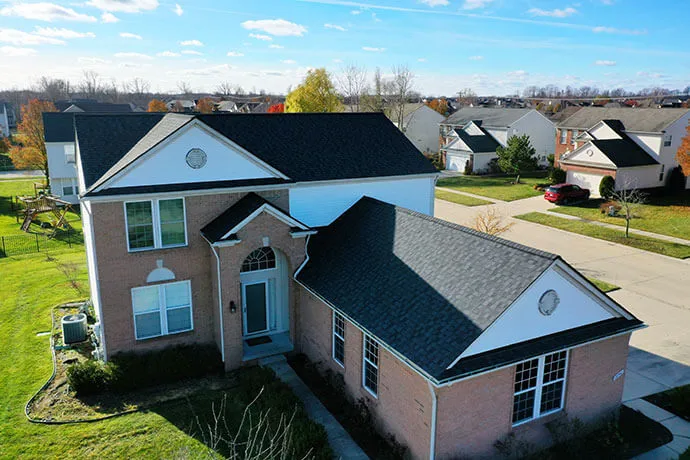Comparing Traditional & Seamless Gutters: What Type Is Best for Your Home?
Learn more about the differences between traditional and seamless gutters and factors to consider when choosing the best type for your home.
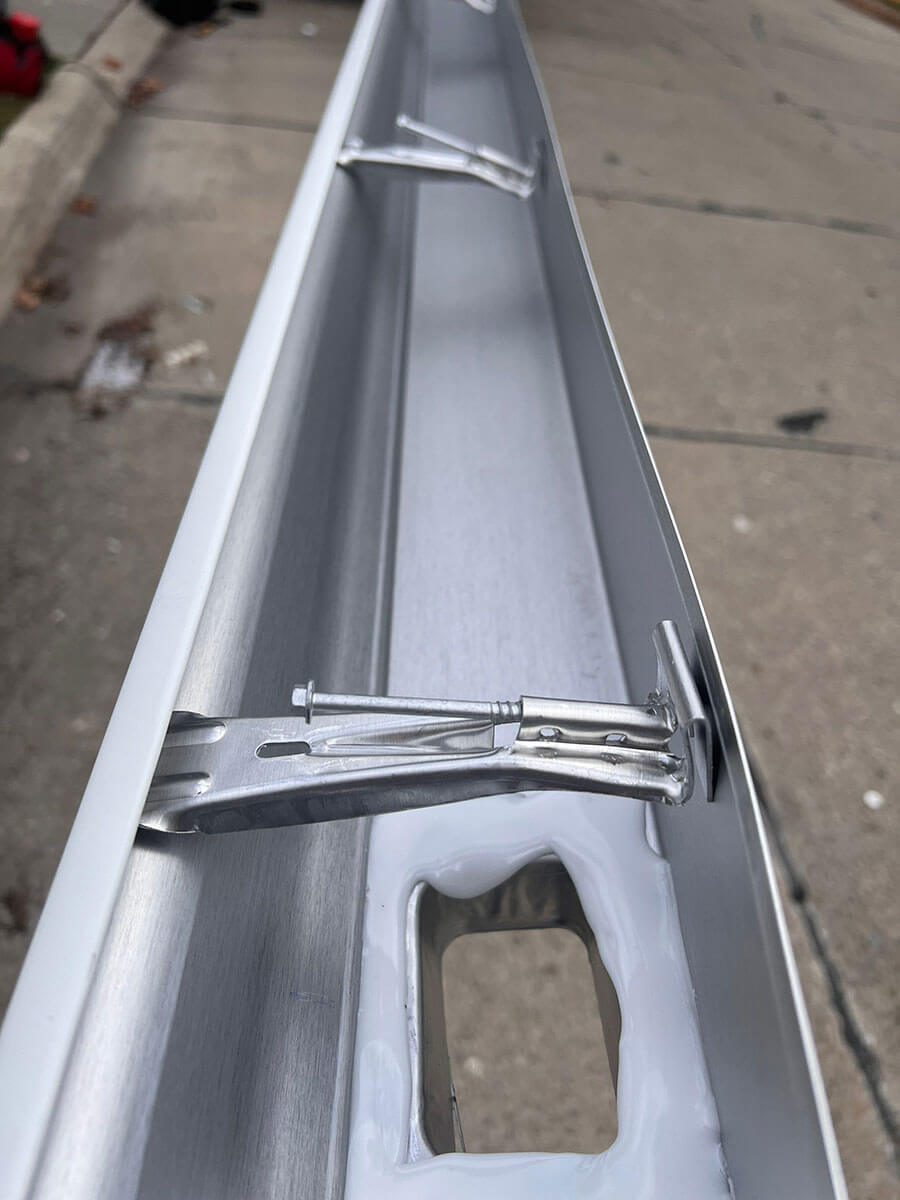
Learn more about the differences between traditional and seamless gutters and factors to consider when choosing the best type for your home.

Gutters play a critical role in the overall functionality and longevity of your roofing system, as they help channel rainwater away from your home’s foundation, walls, and landscaping.
Naturally, choosing the right gutters for your home is crucial to ensuring proper protection and aesthetic uniformity. When making a decision on gutters, you must consider size, shape, material, and type.
Gutters come in several size options—the most common size is 5 inches, but don’t assume this is the right size for your system—we recommend having a professional perform measurements to determine what size gutters you need.
In addition to size, there are a couple of different gutter shapes you can choose from: half-round (shaped like a tube cut in half) and k-style (flat bottom and back)—preference simply comes down to the architectural style of your home, typically historical homes will have half-round gutters. Gutters can also be constructed from various materials, most commonly aluminum, copper, and vinyl.
Finally, you must consider the type of gutter you want to install: traditional/seamed or seamless.
In this article, we’ll discuss the differences between these two options, including advantages, cost, and maintenance requirements.
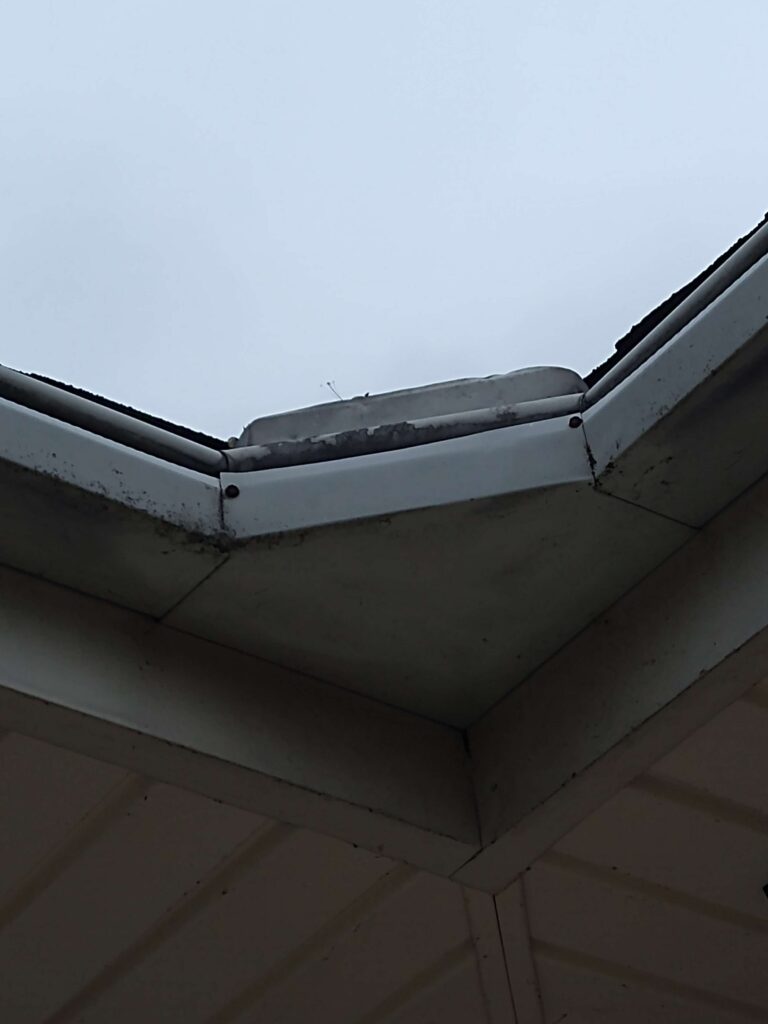
Seamed gutters have a distinct design that sets them apart from their seamless counterparts. They’re constructed in sections, which are typically 10 to 20 feet long. The sections are then joined together along the length of the roofline resulting in seams where the sections meet.
Installing these gutters involves measuring, cutting, and fastening the sectional pieces along the roof’s edge, then all of those seams are sealed with a special sealant to prevent leaks.
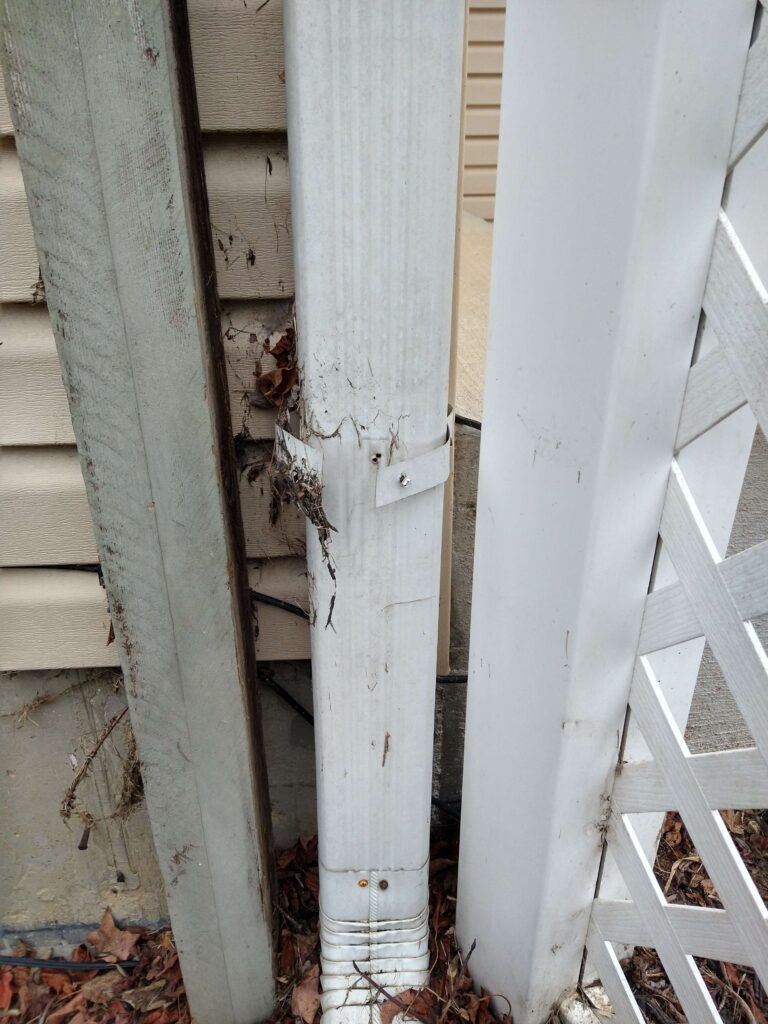
While seamed gutters have their advantages, there are many drawbacks to keep in mind:
The average cost can vary widely based on several factors.
First, material choice matters. Vinyl gutters are usually the most affordable, followed by aluminum and steel. Copper gutters, though less common for seamed types, can be significantly more expensive.
Second, the total length of gutters needed for the home will impact the cost. Larger homes, or those with complex roof designs, may require more gutter material, increasing the overall price.
The complexity of the gutter installation impacts overall costs, particularly labor costs. Factors like the height of the house, roofline accessibility, and the number of stories can influence how easy or difficult the installation process will be.
Labor and material costs can also vary depending on the region. Areas with a higher cost of living may see higher prices for gutter installations.
Lastly, additional features like gutter guards, downspouts, and decorative elements can add to the cost.
Seamed gutters require more routine maintenance than seamless. Primary maintenance tasks include:
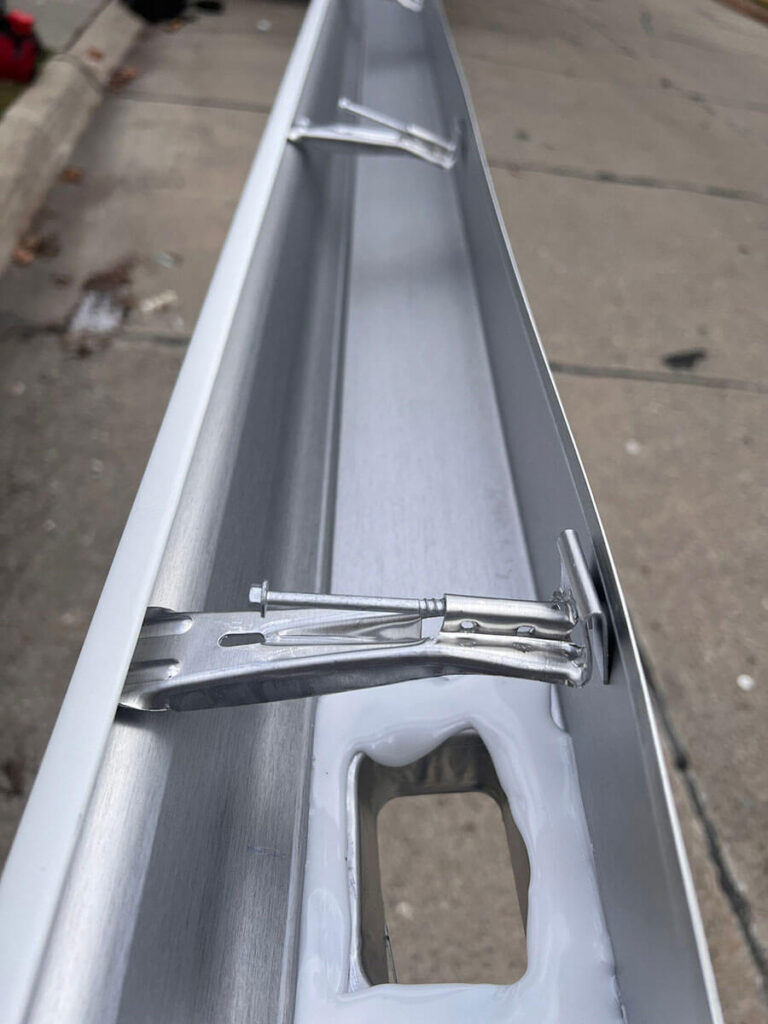
Seamless gutters are characterized by their continuous seamless design, which sets them apart from traditional gutters. The seamless design not only contributes to a more sleek and polished look but also significantly reduces the likelihood of leaks and clogs. They are custom-made on-site to fit the exact dimensions of a home and are available in more material options, colors, and finishes than traditional gutters.
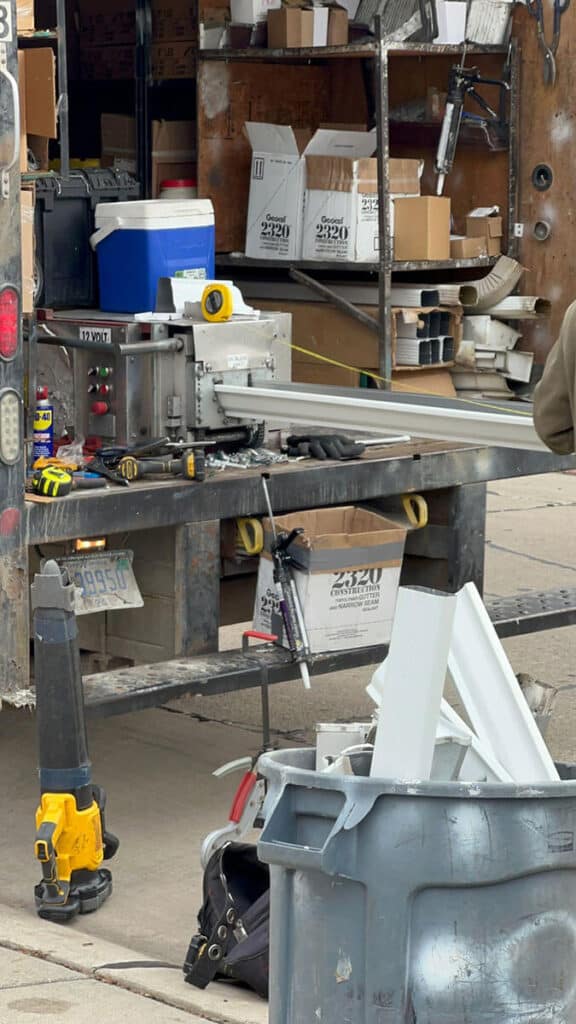
As already mentioned, the cost of installing seamless gutters is a little higher than traditional gutters due to equipment and talent necessary to make them. The cost will also vary based on the factors we covered earlier: material choice, size/layout of the home, installation complexity, geographic location, and additional features that are also being installed, like downspouts and gutter guards.
Choosing between traditional and seamless gutters ultimately comes down to three things:
We have many years of combined experience installing gutter systems—in our professional opinion, seamless gutters are the way to go. While the initial cost is higher than traditional, the cost difference is not dramatic, and the benefits of seamless systems far outweigh any cost considerations. Think of it this way—would you rather install a new gutter system once at a slightly higher cost or install a low-quality option that requires more maintenance and is more prone to leaking?
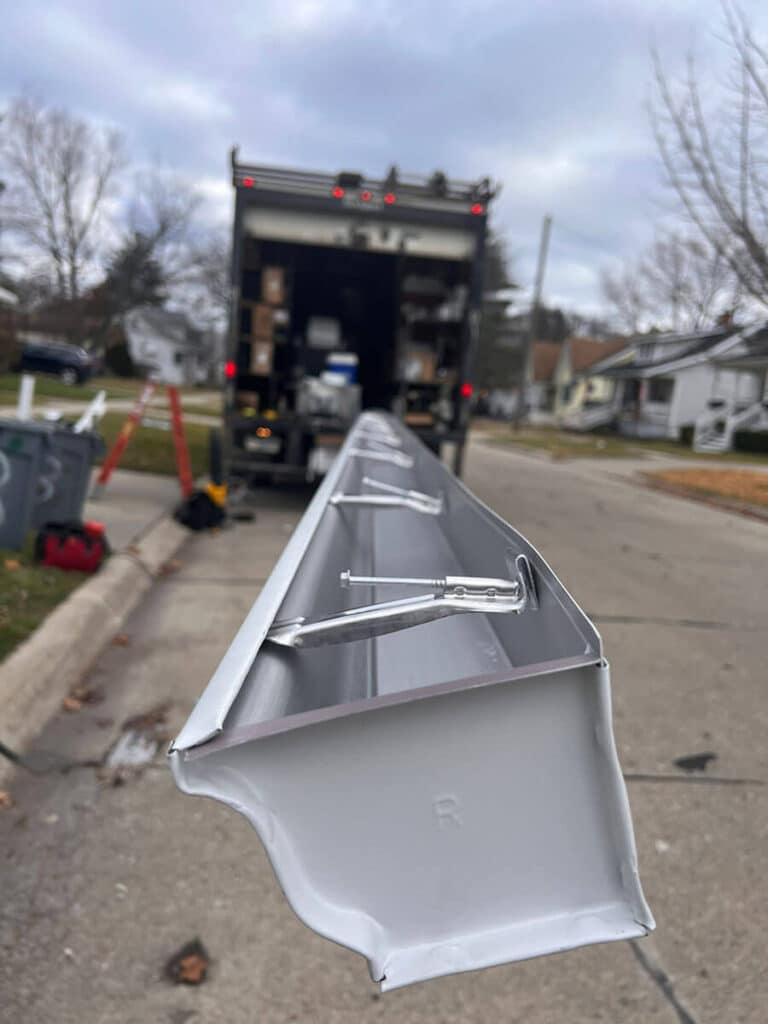
L&S Home Improvements provides 5- and 6-inch seamless gutter options made from premium materials and exceptional gutter protection solutions that fortify your system and reduce the need for seasonal cleaning. We can even install 6-inch downspouts onto 5-inch gutters in certain areas of your home to push water away quickly.
Our seamless system uses aluminum rivets to hold pieces together and features a counterweight-hidden bracket system installed every two feet. These top-quality brackets fit inside the gutter and feature a screw, which stays in place throughout seasonal changes, unlike spikes/ferrules, which loosen over time. We also drive the screw into the wood on a slight downward angle, which helps keep it stable, even during heavy rain or if ice dams form. Our seamless gutters come from a thicker gauge aluminum, are heat-treated, and have baked-on paint to ensure less damage over time, better color retention, and mold and mildew resistance. We also seal all corners, downspout cutouts, and other susceptible areas with a silicone sealant to improve strength and prevent leaks.
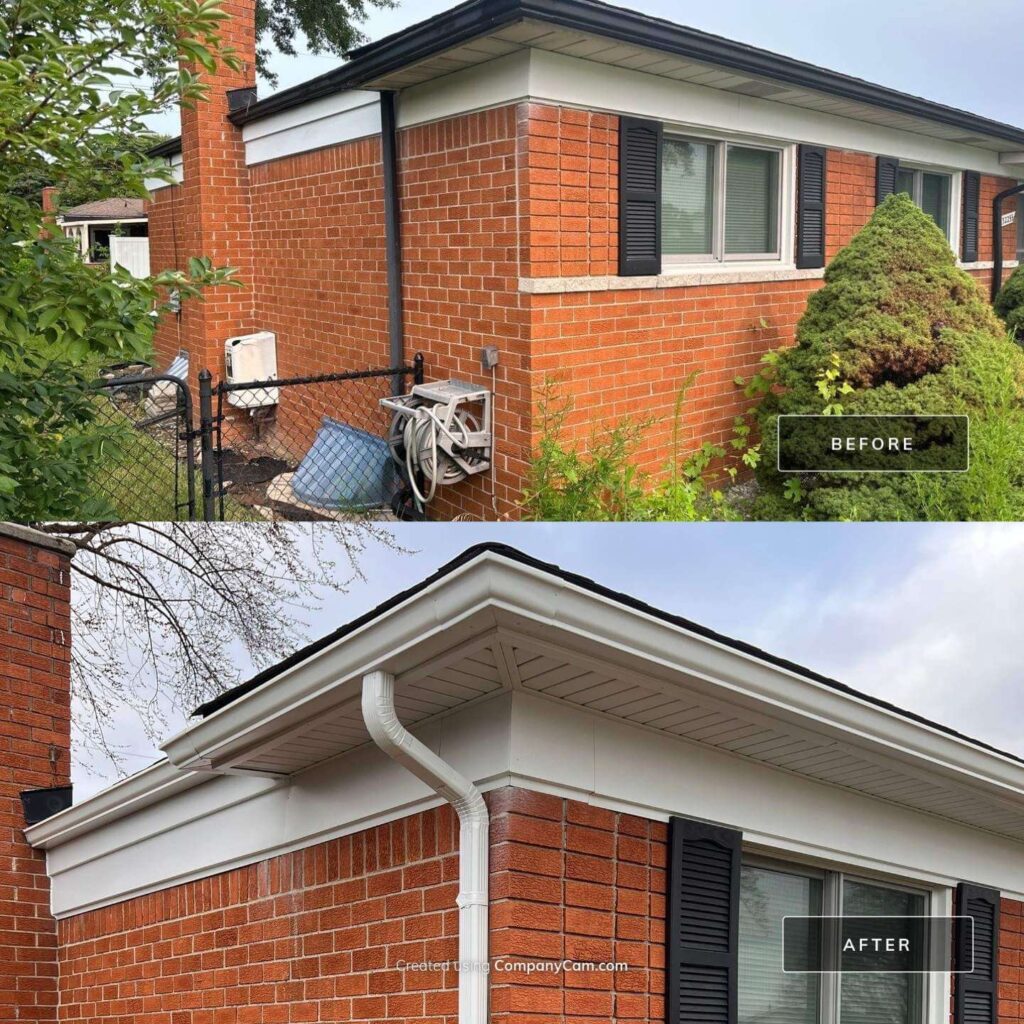
If you need new gutters, don’t wait too much longer to replace them. They’re critical to maintaining the health of your roof and your home’s foundation.
When you schedule your gutter installation with us, our team will help you pick the right size and perform an in-depth water flow analysis to ensure your system effectively protects your home. Our team also looks at all angles of your existing gutter system to find a solution that will protect all facets of your home.
In order to meet every budget we offer easy financing options (subject to credit approval) through GreenSky and Enhancify, including a No Interest No Payment option. We also accept ALL Major debit and credit cards as well as check or cash.
Please contact us today to learn more about our installation process or to request a free estimate.
